“Beetlejuice Beetlejuice” Production Designer Mark Scruton’s Masterful Marriage of Art & Architecture
“It was going to be a continuation of the first film and not some sort of reboot,” production designer Mark Scruton says about Tim Burton’s Beetlejuice Beetlejuice, the sequel to the 1988 cult classic that reunites the absurdly talented Michael Keaton and Winona Ryder as everyone’s favorite goth-undead will they won’t they couple.
The story picks up years after the events in Beetlejuice and sees the Deetz family – Ryder’s Lydia, her estranged teenage daughter Astrid, played by Wednesday star Jenna Ortega, and Lydia’s stepmother Delia (Catherine O’Hara) – back in Winter River to mourn an unexpected death.
For Scruton, it meant designing over 70 different sets across Vermont, London, and Massachusetts for the 46-day shoot. A point of emphasis from Burton was to create as much as possible in camera. “Tim wants to be in the world. I think he has as much fun being in the world as he does filming it,” says Scruton. “So we knew we had to build everything and make it feel like the original one did.” Researching the original aesthetics established by production designer Bo Welch was a guide for Scruton, but influences ranged from German Expressionism, 1960s brutalism, and modernism as well as films like Dr. Caligari and the 1924 Russian film Aelita Queen of Mars.
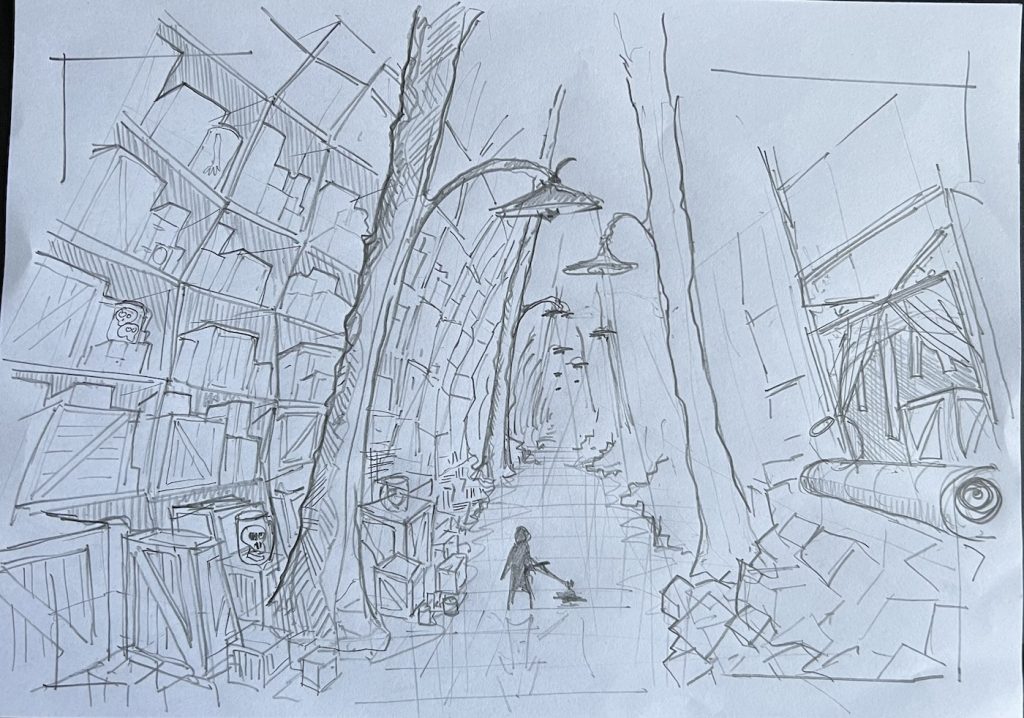
A big part of the work was revisiting the Vermont town of East Corinth, which stands in for Winter River, to construct the Deetz family home while interiors were built on soundstages in London. Making them feel accurate to the first film was crucial for Scruton. “It was important to us that the cast walked into those sets and felt like they were back on because they would be the harshest critic if they walked in and it wasn’t the same. And you don’t want that on the first day because that would be mortifying,” admits the production designer.
The team spent substantial time figuring out what went into the original sets, especially agonizing over props in the first film that fell into the shadows. Scruton also put his own spin on the forced perspective tricks found in the afterlife and built several new spaces, including a police office, train station, dry cleaners, and immigration area. Below, he discusses what went into recreating the Deetz home, a painstaking but fulfilling process of movie magic at its handmade best.
The Deez family home plays a big part in the film. What went into rebuilding the exterior?
We approached it as another character in the film, and we had to figure out what had happened to that character for 30 years and what Delia had done with it. What I think Delia would have done is restore it back to its original roots and the colonial style. In the first film, it goes through the whole postmodern rebuild, and then at the end, you sort of get the impression it’s being put back, but you never really see where it goes. So everything was sort of lovingly taken back to the actual architecture.
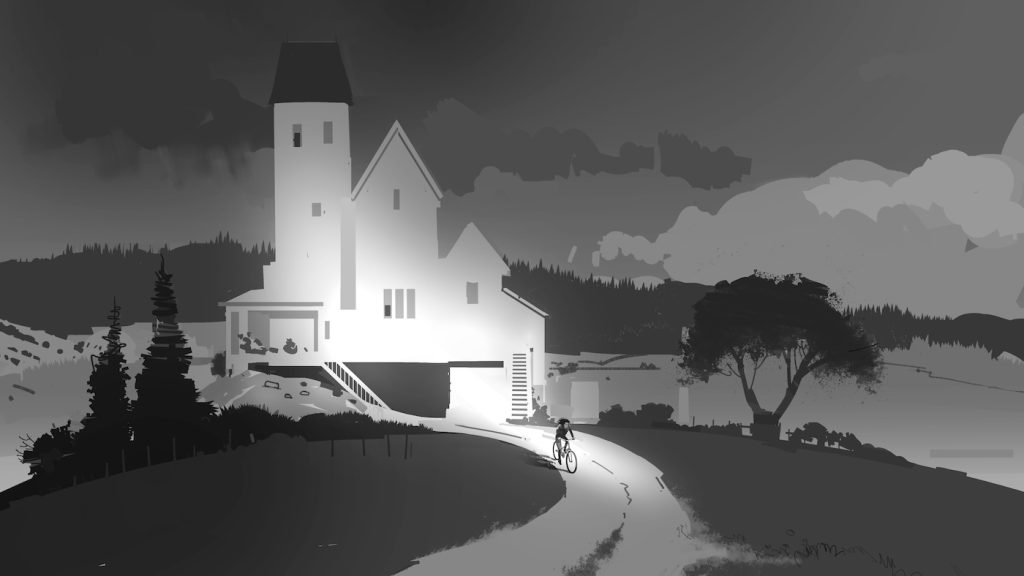
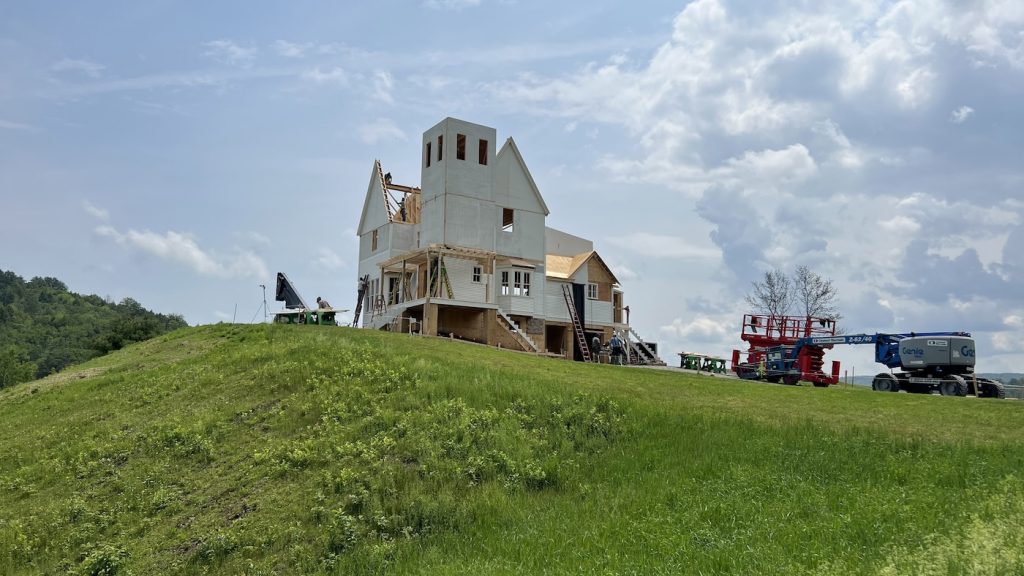
Do you have any references other than the original film to recreate the house?
We had the original plans and elevations from the first film. They were paper-thin and super fragile, and we weren’t allowed to touch them. We just had to take photographs of them, and they were very blurry and sketchy. So we studied the film as well in great detail to make sure that we built it exactly as it should have been.
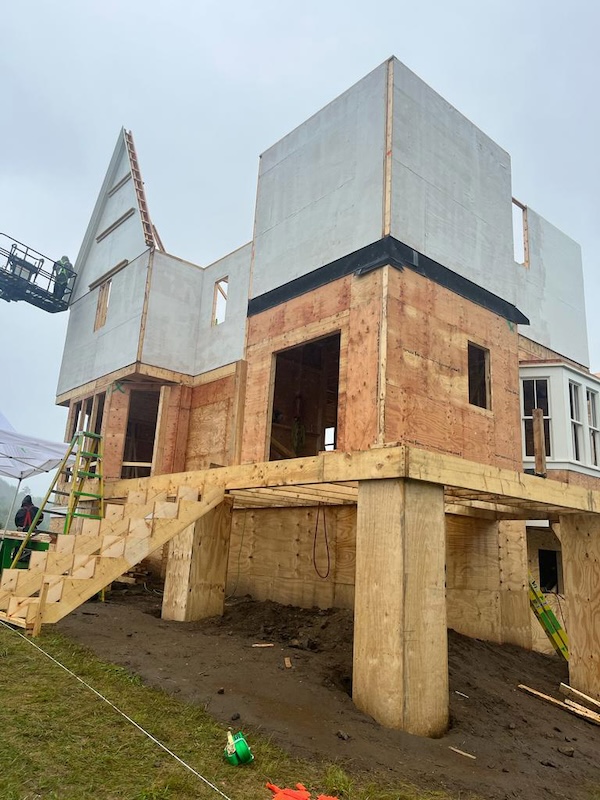
Well, your team nailed it – even the small hill it’s on. Did you find the same hill location in East Corinth from the original?
It was interesting because the hill was still there, but the vegetation and everything else had grown up. So we really had to draw a line between what we left and how we reshaped it. We did a lot of landscaping to make sure that it looked like time had passed, but we wanted it to still look like it was cared for.
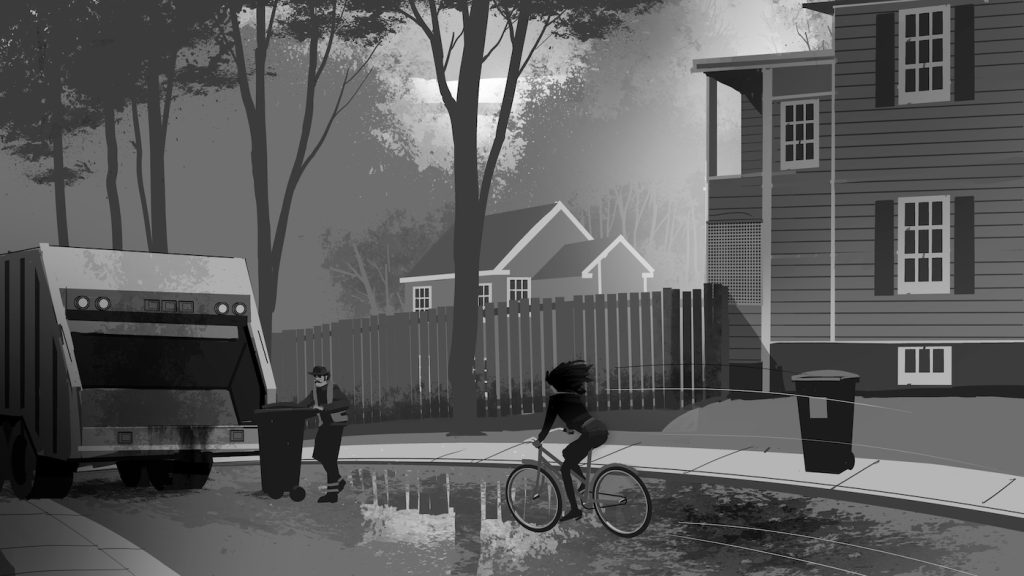
Did you consider roughing up the texture to show that time has passed?
Because of who Delia is, because she’s got money and follows trends—one of which is that she restores the house immaculately—we decided to make it super clean. So, the exterior is the same as the first film, but it is pin-sharp in every bit of detail.
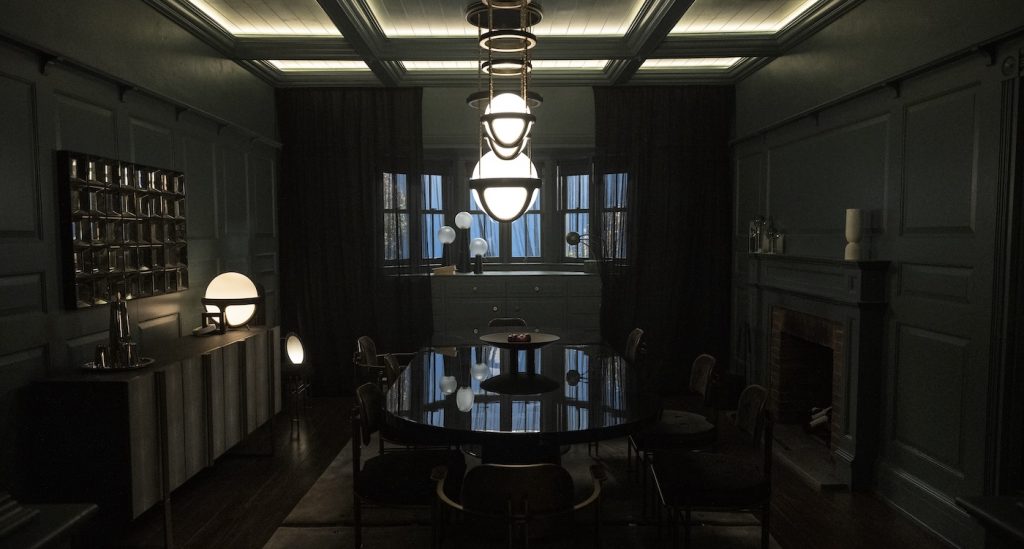
Since part of the production was in Vermont, were you able to connect with local vendors?
It was a mixture of things. A lot of the team came from Boston and the Massachusetts area, but we tried to work with local people as much as we could. We rented barns and farms, and I think we took up every hotel and facility available. We even had some of the local kids helping us with security guards. Anybody who wanted to get involved, I think, ended up getting involved one way or the other.
There’s a funeral scene where the Deetz family is in mourning, and to extend that emotion to the house, a black veil covers the entire exterior. How did you pull that off?
Drawing something on paper is quite a different thing from actually making it happen. It was a big house, so the job of covering it was pretty tricky. Once we arrived at the fabric with the right translucency and flow, we didn’t know if the quantities existed. So, my teams in London, L.A., and Boston all had to track down local suppliers to get the fabric shipped in. It was a big undertaking to get that thing done because we didn’t have much time, either.
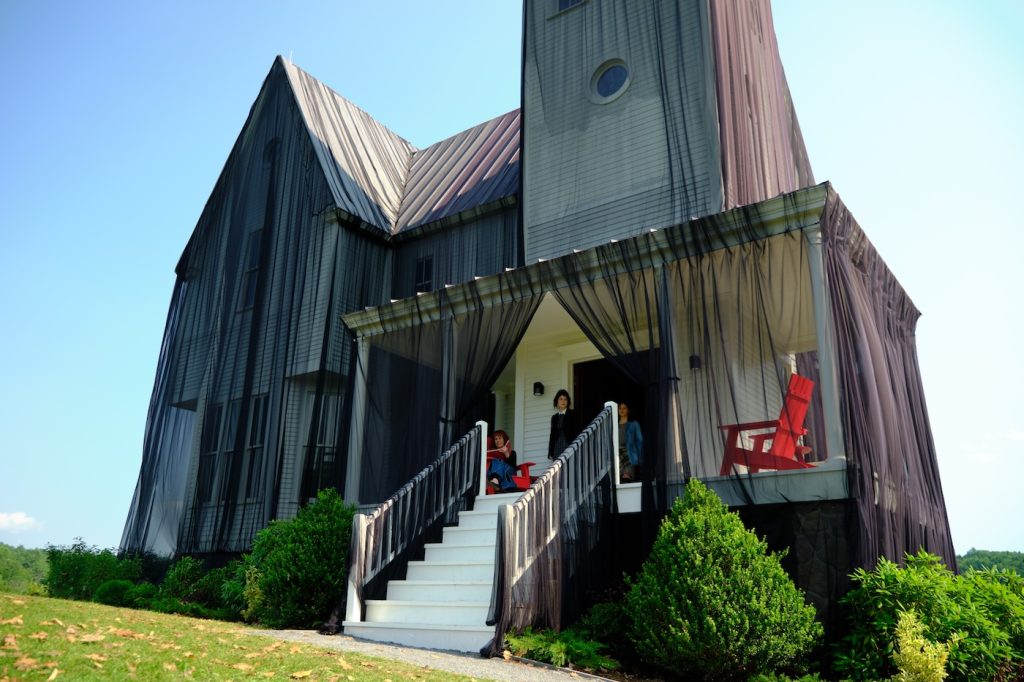
The interiors of the house are so detailed. Did you approach the aesthetics with Delia in mind, too?
Yes, we wanted them to feel like Delia had restored it, so it’s got modern finishes, modern lighting, and very, very high-end little detailing. The knobs and handles are sort of really expensive, and all the carpentry was pin-sharp and beautifully painted. We wanted it to feel like she’d love it and really poured her heart into getting it back to the original house.
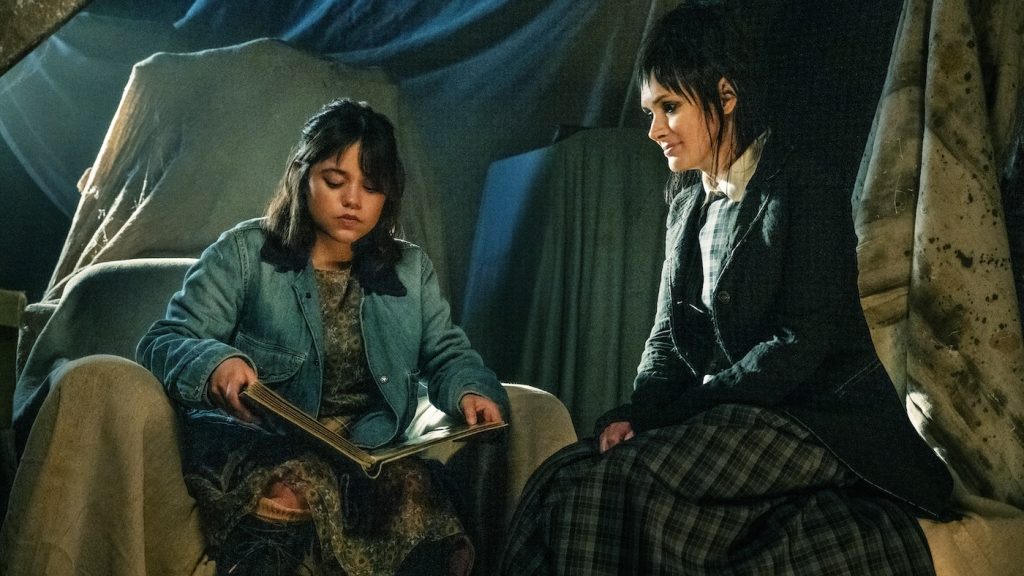
You can see how far your team and set decoration went to match the original interior décor in the Deez home and the afterlife sets. How did you manage all that?
We were very conscious that these films would be studied, and if we did it wrong, we would be called out on it, so we studied everything. We had some original drawings and stills from the original movie, but I went through the original film almost frame by frame and put a Bible together that all the departments could refer back to. Since a lot of the stuff in those sets came from antique shops and thrift stores, we had to draw a lot of it up and have it custom-made. Occasionally, we would luck out and find something on eBay, but a lot of the stuff, the lighting particularly, was custom-made as replicas.
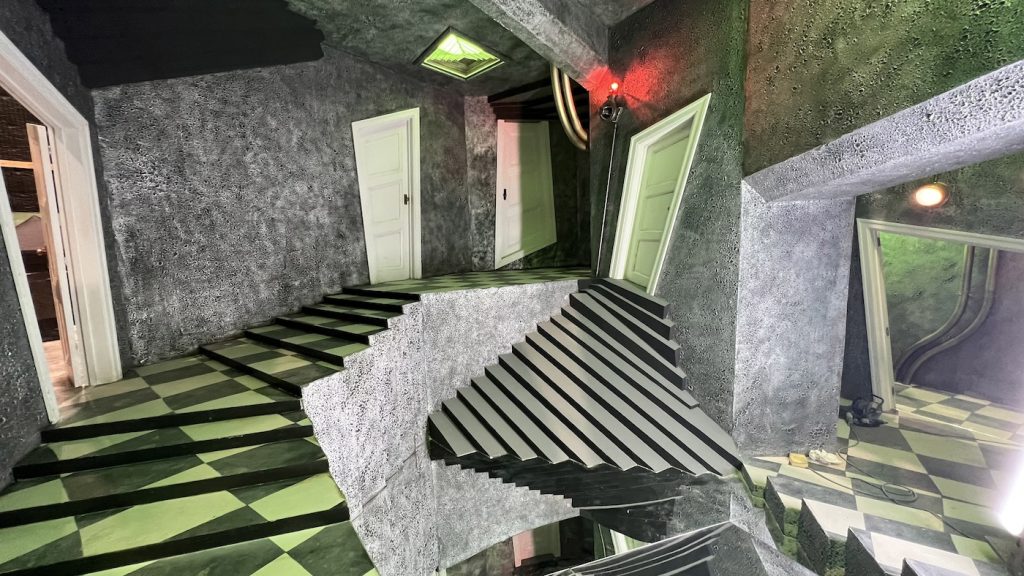
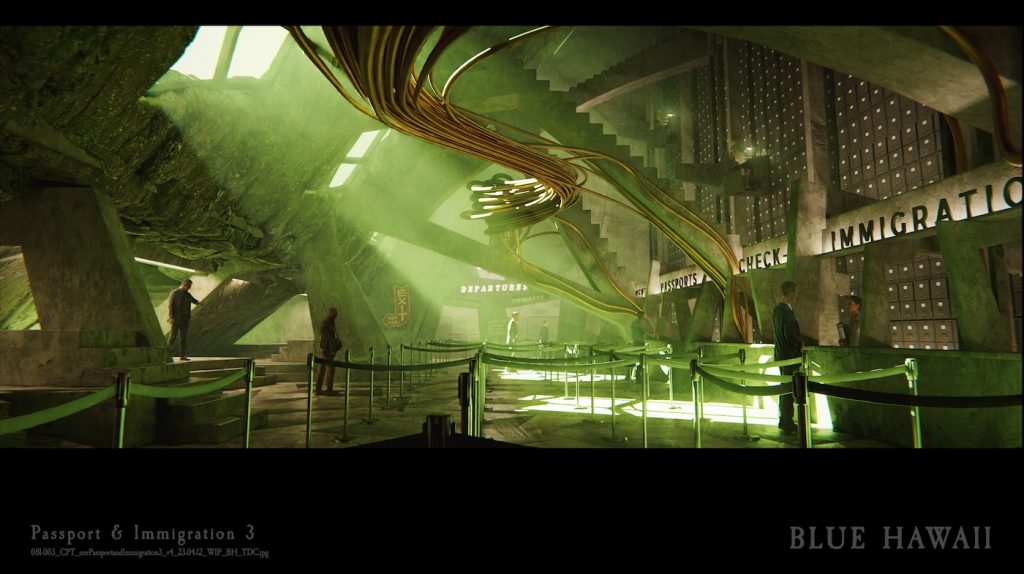
The art is such an important element to the Beetlejuice world, especially with Delia being this avant-garde artist. How did that design work evolve?
A problem we did have sometimes was the artwork. The new rules on clearances are now so strict that we couldn’t use some of the original artwork because the clearance didn’t exist, and no one could track down who had painted it or where it had come from. So we had to recreate some things in a similar style and had artists paintwork with the same vibe, feel, and color palette.
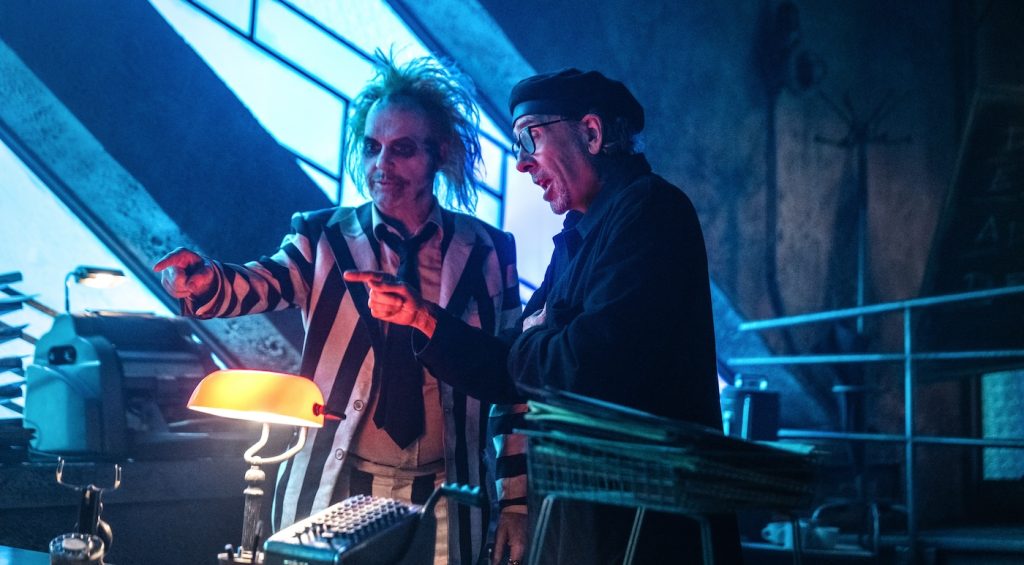
There’s a joy seeing all the throwbacks to the original film, one of them being the miniature model of the town in the attic. What was the approach to it?
That prop really had to be identical because we were going to be inches away from it for almost whole scenes. I had an art director dedicated to it, and it took us 12 weeks to build every detail. It had to look handmade, and the only real way you can do that is by making it by hand, so it was all handmade, and we didn’t 3D print stuff. It was just a very painstaking job.
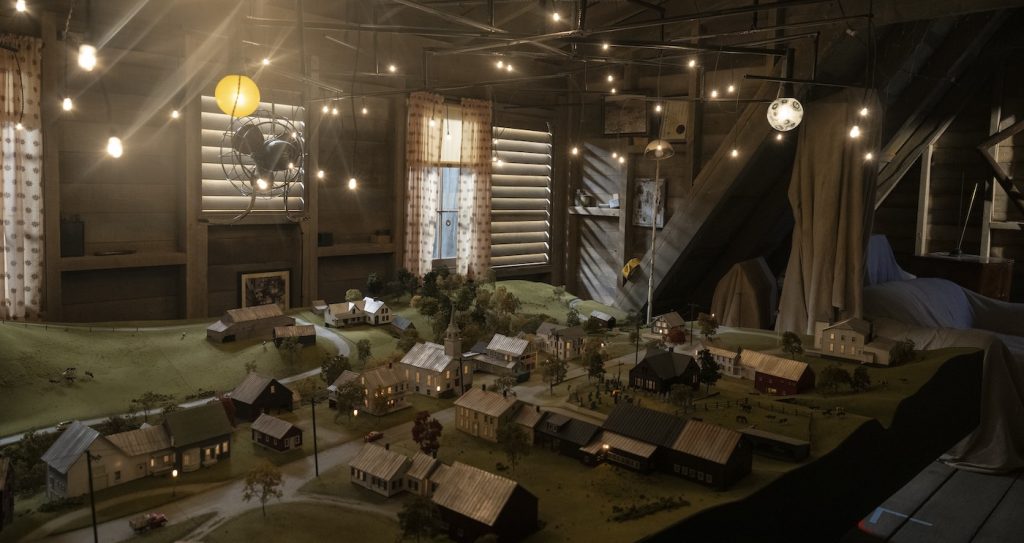
Beetlejuice Beetlejuice is in theaters now.
For more on Beetlejuice Beetlejuice, check out these stories:
“Beetlejuice Beetlejuice” Editor Jay Prychidny on the Gospel of Ghoulish Pacing
“Beetlejuice Beetlejuice” Editor Jay Prychidny on Capturing a Debauched Poltergeist’s Manic Energy
“Beetlejuice Beetlejuice” Scares Up Standing Ovation & Rapturous Reception at Venice Film Festival
Featured image: The church set in Beetlejuice Beetlejuice. Courtesy Mark Scruton/Warner Bros.



